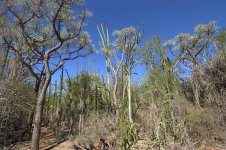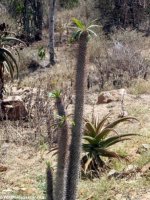ctnjoker
New member
The title is a reference to the rock band "Tool," and the guitarist, Adam Jones, who is known for famously spreading mis-information and keeping his guitars and gear shrouded in mystery. (People believed him when he said a certain paint changed the tone of his guitar....paint.)
Anyways, there seems to be almost NO information about these little critters, and the info I have found contradicts itself.
I know they come from Southern Madagascar, but where exactly? Any photos?
My reason for asking, is because my girlfriend and I picked up a pair of these guys about 2 months ago. They are healthy and de-stressed, we know the basics on how to care for them. They eat regularly, ect.
But I wanted to spruce up their habitat, and being a long-time Crestie owner, I take great joy in making the terrarium look as close to the natural habitat as possible.
So what kinds of plants surround them? Trees? Soil? Sand? I've heard "jungle," "desert," "forest," "arid forest," "mountains," ect. I've attatched some (contradicting) pictures of Madagascar...
Where the heck do they come from?!
Anyways, there seems to be almost NO information about these little critters, and the info I have found contradicts itself.
I know they come from Southern Madagascar, but where exactly? Any photos?
My reason for asking, is because my girlfriend and I picked up a pair of these guys about 2 months ago. They are healthy and de-stressed, we know the basics on how to care for them. They eat regularly, ect.
But I wanted to spruce up their habitat, and being a long-time Crestie owner, I take great joy in making the terrarium look as close to the natural habitat as possible.
So what kinds of plants surround them? Trees? Soil? Sand? I've heard "jungle," "desert," "forest," "arid forest," "mountains," ect. I've attatched some (contradicting) pictures of Madagascar...
Where the heck do they come from?!




